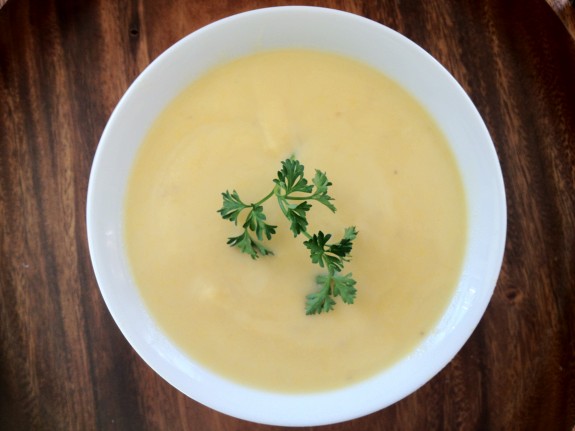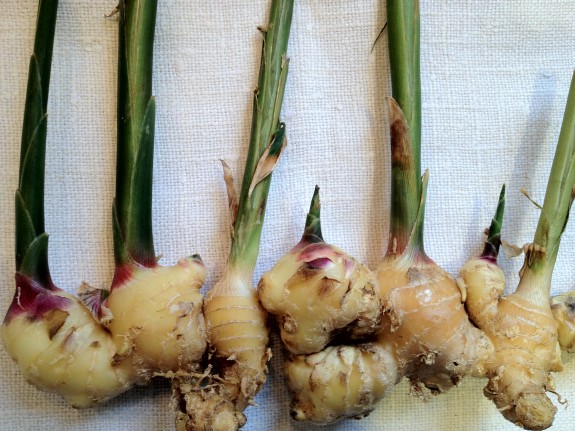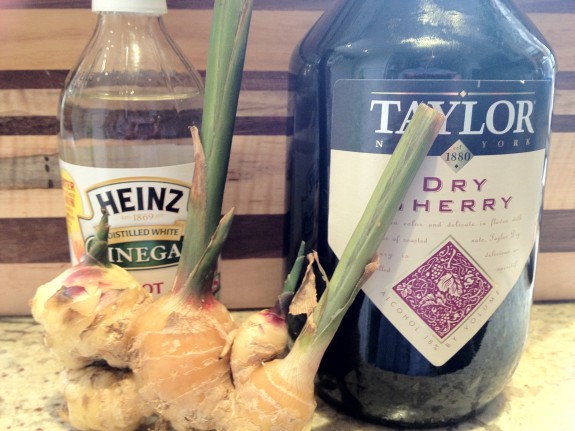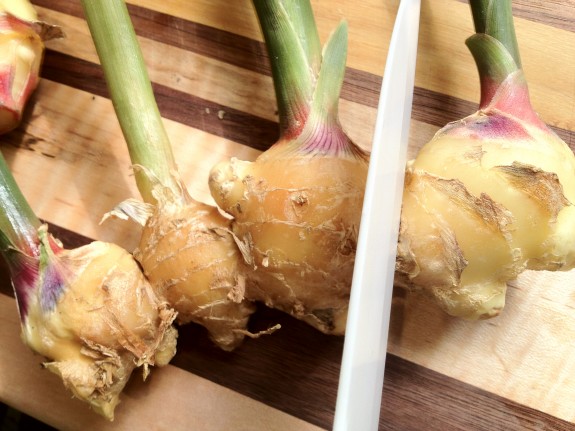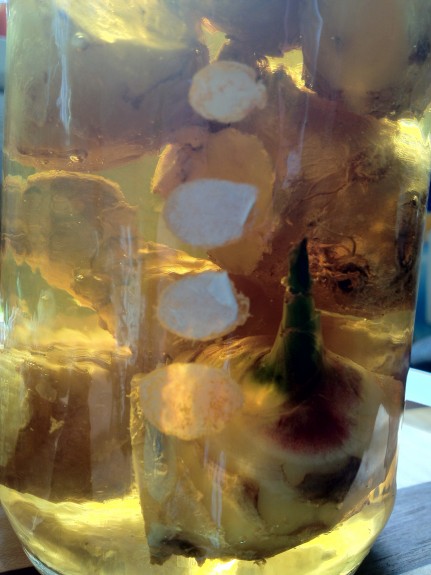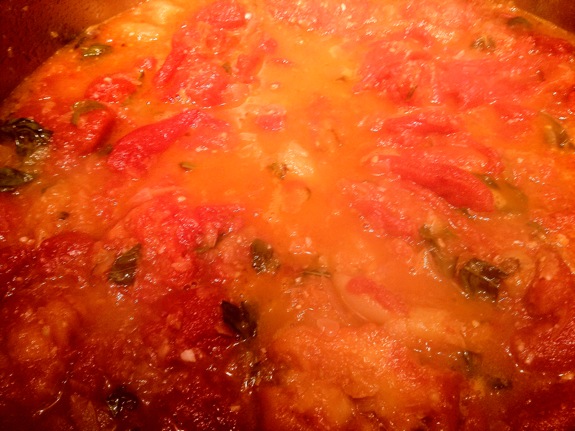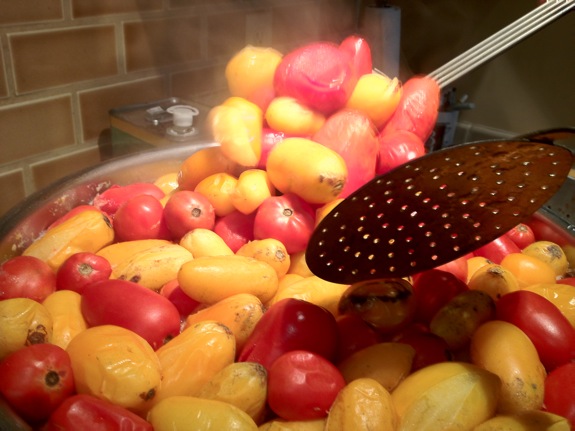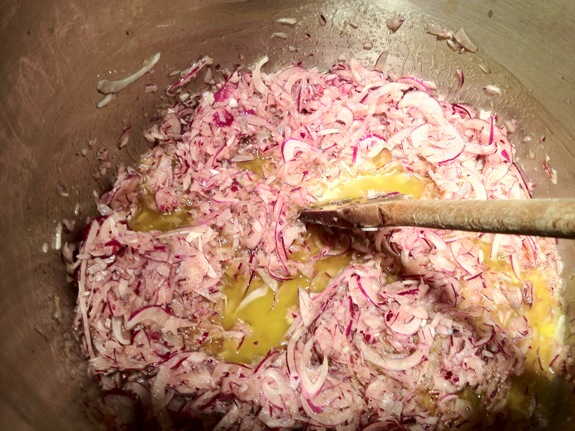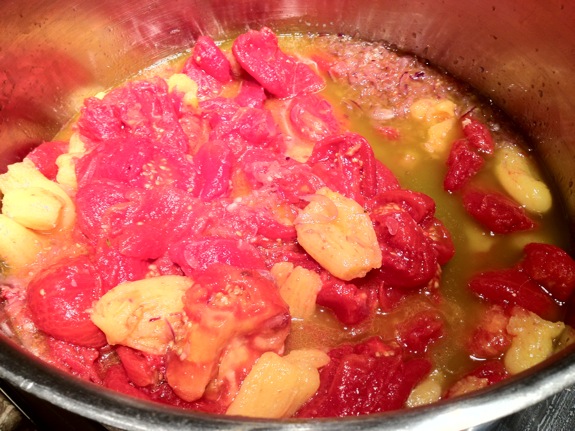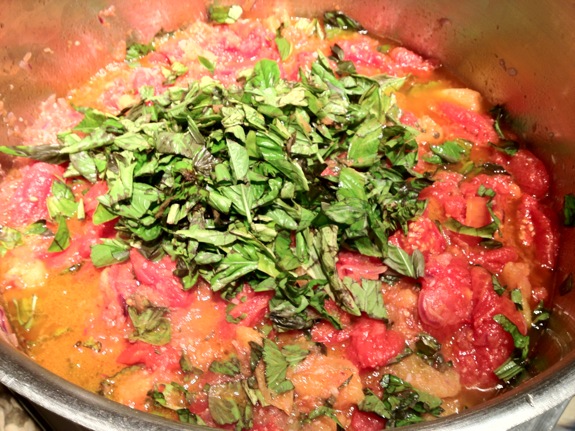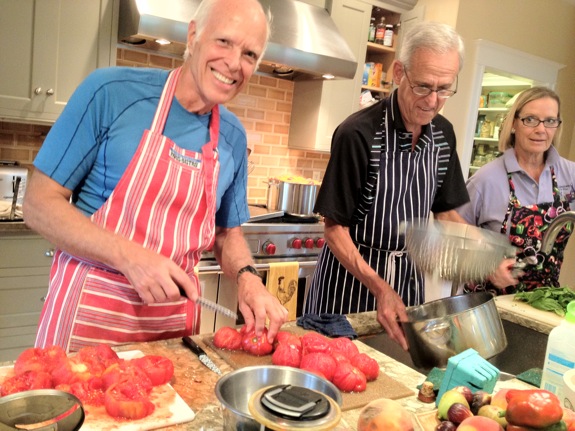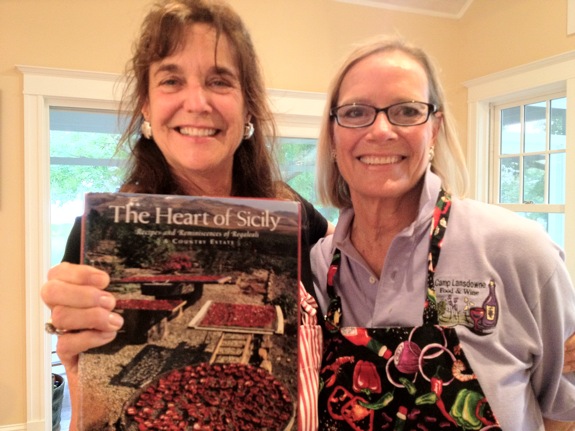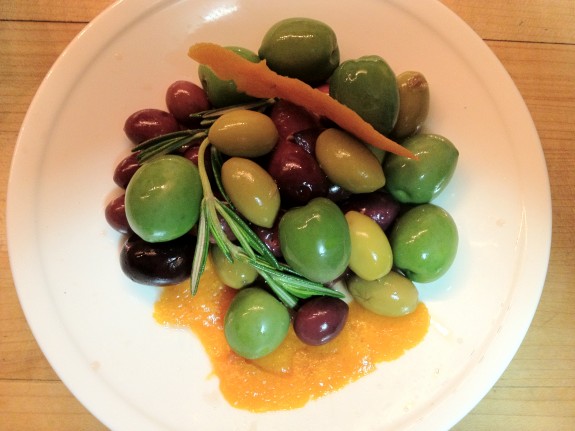Coping with Halloween Sweets… And Beyond
- At October 23, 2012
- By Katherine
- In Articles, News
 0
0
Click “Play” OR You can watch this video on CNN
Read this article by Katherine in The Huffington Post
The holidays – starting with Halloween – can trip up even the most conscientious dieter. This happened to a client who had lost and kept off 20 pounds successfully. The Halloween trap caught her by surprise. She bought several bags of Snickers, her favorite candy bar, and began a binge that didn’t end until the candy was gone – long before Trick or Treat even began! That brought her up a couple of pounds.
The holidays came and before you know it, she had gained almost ten pounds before winter was out.
With Halloween and the holidays looming, it’s important to determine your strategy for dealing with the temptation of sweets: what you eat, what you bring in your home, and what you serve others. My philosophy is that all foods can be enjoyed in moderation. But there are special challenges posed with some foods, particularly sweets, which have been confirmed by solid science – it’s not just in our heads! Understanding the science behind sweet craving and overeating can help us eat in a more moderate and healthy way.
People have an inborn attraction to sweets. If you don’t believe it, simply watch an infant’s response to something sweet versus, say, a vegetable. There’s an automatic acceptance, even joy, after eating something sweet. On the other hand, vegetables are an acquired taste, which may take 10 – 20 tries before acceptance. This is partly explained by evolution. We’ve been eating naturally sweet foods such as breast milk and fruit for millions of years. They contain life-sustaining nutrients, and a love for those foods helped keep us alive. Also, during evolution, an attraction to scarce calorie-dense foods, such as sweets and fats, improved our chances for survival.
But there are other explanations. The research surrounding our attraction to sweets has stepped up in recent decades. Scientists are grappling with understanding the calorie imbalances causing the obesity epidemic, which is partly fueled by eating too many sweets.
Our brain chemistry holds an important clue. Research shows that sweets, like many antidepressants, increase the brain chemical, serotonin, which helps regulate mood and appetite. Without carbohydrates, your brain stops regulating serotonin. Eating carbohydrates profoundly improves mood; which is why a handful of candy corn will make you feel better.
When we’re stressed, anxious or depressed, serotonin levels can drop, and one way people modify their moods is by eating carbohydrates. But, Halloween and holiday sweet cravings may be uniquely influenced by seasonal changes, too. Studies show that as days get shorter and we are exposed to less sunshine, serotonin levels drop and this leads to increased carbohydrate cravings in susceptible people. Women are particularly vulnerable to sweet cravings because their brains have less serotonin than men.
There have been other explanations for women’s reported increased sweet craving and indulging. Some researchers attribute the difference to the female hormone, estrogen. It’s been reported that sweet cravings change according to where a woman is in her menstrual cycle, circumstantial evidence that estrogen may play a role. But the findings are inconsistent, as some report increased cravings during menstruation, while others report higher cravings as a premenstrual symptom, a time when serotonin levels may be low.
But the bottom line is clear: Females overeat sweets compared to males. A study of female rats found they even ate more rat chow when it was sweetened, compared with males, according to a study in the American Journal of Physiology. In animals, having high levels of estrogen is associated with eating more sweets. This theory has yet to be proven in humans.
Cravings and overeating are difficult to study because they can be so subjective and multifactorial. Other researchers stipulate sweet cravings are mainly determined by culture or by psychological and behavioral factors, rather than physiology.
In some cultures, people don’t crave sweets because they haven’t been exposed to them as regularly as Americans. A study of chocolate, for instance, found that American women crave chocolate significantly more than Spanish women. And while a large percentage of American women reported increased chocolate cravings surrounding their menstrual period, Spanish women did not.
Other studies confirm that exposure during childhood is the major determinant of what we crave and are susceptible to overeating.
I copied my mother’s love for sweets and love of baking; it was a fun activity we did together. In college, to combat loneliness, and heck just for fun, I over-indulged my love for sweets (as the pounds went up and up). I would regularly bake my favorite chocolate chip bars and caramel popcorn, both of which I made in childhood. Study after study shows the importance of parental modeling on a child’s preferences.
Availability and proximity are two of the most important factors science has found influences what we crave and overeat and they probably trump all of the other reasons combined. When tasty foods, such as sweets, are around, we simply eat more of them.
Chances are, a combination of factors is responsible for cravings and overeating sweets at Halloween and the holidays. Holiday sweets are novel, they only comes around once a year. It comes in small pieces so you fool yourself into thinking you’re not eating as much. You put it in bowls around the house and eat it mindlessly.
If you have a strong desire for sweets, it may be a sign that you’re depressed, anxious or stressed. But you don’t have to indulge in sweets to raise your serotonin levels or to feel good. Physical activity, stress management, spending time with loved ones are activities which will also help reduce depression, anxiety and stress. (My client discovered a psychological basis for her binges, which she is successfully averting these days).
Using candy to feel better is not a great solution for your waist line. It is so high calorie, it doesn’t take much to overeat and forget your weight loss plans. For the same calories in a candy bar, you could eat four apples, or maybe you couldn’t – and that’s the point!
Don’t get me wrong, I’m not urging you to be a Halloween Scrooge. I believe it’s possible to have fun with Halloween, and even eat Halloween candy, but still avoid some of the excesses that many of us have fallen victim to in the past. Here are a few suggestions:
- To reduce the possibility of seasonal cravings, make sure you’re getting 30 minutes to one hour of sunlight each day by taking a walk in the mornings or at lunch. You may be able to “catch up” on the weekend, if you didn’t get enough rays during the week,
- Eat plenty of healthy carbohydrates, such as fruits, vegetables, whole grains and legumes, to keep serotonin at optimum levels and reduce cravings of less healthy carbohydrates, such as refined sugar,
- If you feel driven to eat sweets, it may be a signal that you’re depressed, anxious or stressed. Reduce tension and anxiety by exercising, meditating or talking with loved ones. It’s important to understand the core of the problem and for that, you may need to seek help from a professional,
- If you want to lose weight, keep your candy – or other “extra” calories – to no more than 10% of your daily calories (that’s 200 calories for the average 2,000 calorie intake, or 150 for 1,500 calories). You may even get away with one big splurge on Halloween. But if you splurge for two or more days, it will probably effect your waist line negatively,
- If you can’t resist eating too much candy, wait to buy it on the day of the party or event (or, don’t buy it). This way, the candy won’t be sitting around as a constant temptation,
- Buy only what you need for the event and buy your least favorite candy. Give away the remaining candy at the end of the evening so that there’s nothing left,
- Try fun and healthier alternatives to sweets to have around your home and serve to family and guests, such as popcorn, roasted pumpkin seeds, sliced apples and fruit with nice dips,
- Most importantly, if you do find you overeat, lighten up, don’t dwell on the negative and get over it! Analyze objectively what you can do differently next time,
With awareness and good planning, you can have your sweets and eat them, too!
Katherine’s Market Recipe: Cauliflower “Vichyssoise”
- At October 23, 2012
- By Katherine
- In News, Recipes
 0
0
“Thank you for the best soup we’ve had in ages. I love it! And I hate cauliflower!” said my neighbor Nancy Flinn. A client’s teenaged son even asked for 2nd and 3rd helpings. That’s why this is one of my favorite soups. It’s adapted from “The French Culinary Institute’s Salute to Healthy Cooking,” an inspirational cookbook for me. A “Vichyssoise,” is normally cold, but I recommend you serve this hot. A traditional vichyssoise is made with cream, potatoes and leeks, but I think you’ll love this version even more – made with the more flavorful cauliflower, a little potato lending texture, and milk making it lusciously smooth.
Today is the 10th “Katherine’s Market Recipe,” all of which are designed to be delicious, easy, quick, family-friendly, nutritious (heart-healthy & diabetes-friendly), and to highlight produce found at our local Farmers Markets this week. At your Farmers Market, you’ll find produce picked at peak ripeness, which means maximum flavor, texture and nutrition. You’re also helping save the environment when you buy at your Farmers Market. Here’s how…
For my “Cauliflower Vichyssoise,” I recommend you buy the cauliflower, leeks, and potato at Georgetown’s Rose Park Farmers Market (there are only two market days left!) on Wednesday or Dupont Circle’s Fresh Farm Market (open year-round) on Sunday.
Cauliflower “Vichyssoise”
By Katherine Tallmadge, M.A., R.D.
Cauliflower is in the species of foods called “brassica.” The brassica family of foods has extremely high nutritional values and contain high levels of antioxidants and nutrients such as vitamin C, selenium, calcium, potassium, folic acid and choline – important for the brain, as well as soluble fiber, which reduces cholesterol and helps level blood sugar. Brassica, a huge category of foods including broccoli, cabbages, mustard seeds and greens, also contain potent anti-cancer compounds which help detoxify carcinogens in the liver before they continue to circulate in your bloodstream. These compounds also aid your immune response with anti-viral and anti-bacterial properties.
4 to 8 Servings
Ingredients
1 Tbsp Canola Oil
2 Leeks
1 Head Cauliflower
1 Medium Potato
6 Cups Chicken Stock (or vegetable stock), fat removed
1 Cup 1% Milk
Salt and Freshly Ground Pepper
8 leaves Fresh Parsley, Chopped
Slice the white part of the leeks, cut the cauliflower into florets and set aside. Heat canola oil in an iron skillet over medium heat. Add sliced leeks, stirring frequently for about ten minutes until soft. Stir in the stock, cauliflower and potato. Reduce the heat, cover and simmer for about twenty minutes or until vegetables are soft. When mixture has cooled a bit, puree with the The Cuisinart Smart Stick… No mess, no fuss! (or blender or food processor), add the milk. Serve hot in the cool weather, cold in the hot weather. Add salt and freshly ground pepper to taste. Garnish with chopped parsley.
700 calories in the entire pot of soup
Autumn Reflections & A Special Thanksgiving Menu
- At October 22, 2012
- By Katherine
- In News, Recipes
 0
0
Don’t miss the special Thanksgiving Menu below…
“This poem reminds me of how Autumn is a threshold—in the midst of the abundant autumn landscape of color and light, there is also a sense that the grey bare days of winter are just around the corner,” says Terri Lynn Simpson, Consultant for Contemplative Programming, Washington National Cathedral Center for Prayer and Pilgrimage.
“These liminal times are like open doorways that invite us to a particular kind of mindfulness where we are aware that we’re moving from one way of being to another. One foot is in the past and one foot is in the future, and in the midst of the two is the present. We can put our weight on one foot or another, superficially living in the past or the future, but true balance comes only when we live deeply in the moment.” Learn more about the health benefits of mindfulness…
Song for Autumn
by Mary Oliver from New and Selected Poems: Volume II (Beacon press)
In the deep fall
don’t you imagine the leaves think how
comfortable it will be to touch
the earth instead of the
nothingness of air and the endless
freshets of wind? And don’t you think
the trees themselves, especially those with mossy,
warm caves, begin to think
of the birds that will come — six, a dozen — to sleep
inside their bodies? And don’t you hear
the goldenrod whispering goodbye,
the everlasting being crowned with the first
tuffets of snow? The pond
vanishes, and the white field over which
the fox runs so quickly brings out
its blue shadows. And the wind pumps its
bellows. And at evening especially,
the piled firewood shifts a little,
longing to be on its way.
Katherine’s Favorite Thanksgiving Recipes
Recipes Excerpted From: Diet Simple Farm to Table Recipes: 50 New Reasons to Cook in Season!
Appetizer:
Najmieh’s Yogurt and Spinach Dip
First Course Options:
Najmieh’s Winter Salad of Orange and Pomegranate
Butternut Squash Soup with Curry and Ginger
Side Dish Options:
Kale and Spinach Gratin with Garlic, Rosemary & Thyme Smothered in Olive Oil Bechamel Sauce
Warm Potato Salad with Haricots Verts with a Lemony Garlic Mayonnaise
Main Course:
Turkey!
Dessert Options:
Katherine’s Market Recipe: Butternut Squash Soup with Curry and Ginger
- At October 15, 2012
- By Katherine
- In News, Recipes
 0
0
“A ‘comfort soup’ with just the right spices to make it interesting; my ‘go to’ soup for the Fall!” says my neighbor, Constance Chatfield Taylor, president of Flying Colors Broadcasts. “Great to serve with h’oeuvres in simple demitasse cups or on Thanksgiving day.”
Winter squashes, particularly butternut, are far superior to the summer squashes and zucchini in taste and nutrition because of their deeper color and higher carbohydrate and nutrient content. The most potent squashes are the more deeply colored varieties, especially pumpkin and butternut. Their color is provided by one of the most powerful nutrients: beta-carotene.
Characterized by a chubby bowling pin shape, a buff/beige color on the outside and a deep orange on the inside, the butternut is an exceptional source of beta-carotene, an antioxidant which converts to vitamin A in your body. Beta-carotene is critical for your immune system, your skin, your vision, bones, reproduction, and more. Studies show that people who eat foods high in beta-carotene and people with high blood levels of beta-carotene have a lower incidence of certain cancers. But you won’t get the same results with a beta-carotene supplement. Study after study has shown disappointing results with the supplements. So, only the food will do! But that’s a good thing for us squash lovers.
Apparently, each squash is a bustling little factory of nutrients and phytochemicals, the plant compounds with potent powers of healing. When acting synergistically in a food, these nutrients provide a more powerful health punch than the individual nutrients alone. Some of the most important nutrients in squash are antioxidants, such as beta-carotene, alpha-carotene and vitamin C, which are powerful substances believed to reduce inflammation, improve immune function and help prevent heart disease and cancers, among other benefits.
But there are other good reasons to eat butternut squash.
Butternut squash is also a great source of fiber (good for your gastrointestinal system), potassium (important for your heart and lowers blood pressure), vitamin C (a great antioxidant important for your skin, bones and healing), magnesium (important for muscle function, the heart, bones, blood clotting, and improves diabetes),manganese (important for metabolism and bone formation) and calcium (important for your heart and bones). And a big plus: it’s low in calories, only 82 calories in a cup (7 ounces) of baked squash cubes.
Today is the 9th of “Katherine’s Market Recipes,” all of which are designed to be delicious, easy, quick, family-friendly, nutritious (heart-healthy & diabetes-friendly), and to highlight produce found at our local Farmers Markets this week. At your Farmers Market, you’ll find produce picked at peak ripeness, which means maximum flavor, texture and nutrition. You’re also helping save the environment when you buy at your Farmers Market. Here’s how…
I recommend you buy the butternut squash, “candy”onion, and garlic at Georgetown’s own Rose Park Farmers Market on Wednesday, the Glover Park – Burleith Farmers Market on Saturday, or Dupont Circle’s Fresh Farm Market on Sunday. Incredibly, you can even buy locally grown ginger at the Dupont Circle Farmers Market or other Fresh Farm Market locations from Next Step Produce, Tree and Leaf Farm, The Farm at Sunnyside, Radix Farm and Mountain View Farm. It’s simple to preserve this fresh, tender and exquisite ginger so you can have it all year long. Learn how with my step-by-step instructions for Preserving Ginger…
Butternut Squash Soup with Curry and Ginger
By Katherine Tallmadge, M.A., R.D.
About 6 servings
Ingredients:
1 Small Butternut Squash
4 Cups Water
2 Tbsp Canola Oil
1 Cup Chopped Sweet Onion (about 1 medium)
1 Clove Garlic, crushed (2 cloves, if you like it spicy)
1 tsp Curry Powder (2 tsp, if you like it spicy)
1 Tbsp fresh Ginger, about 2 inches, grated (2 Tbsp, if you like it spicy)
1 Cup Chicken or Vegetable Stock
Salt and Freshly Ground Pepper to taste
Optional Garnish: A few fresh Cilantro sprigs per bowl
Cut Butternut Squash in half, lengthwise. Scoop out seeds. Place squash face down in baking pan with 4 cups water. Bake at 350 for 45 minutes or until soft when pierced by a fork. (If you cannot slice a raw squash, as an alternative … Bake the squash whole, then slice it in half when relatively cool – add the water to the soup pot later…)
While the squash is baking, prepare the aromatic vegetables and spices: Place the oil in a large iron skillet or soup pot on medium-high. Add onions and garlic and fry until golden. Stir in curry powder, ginger, and a pinch of salt and simmer on low for a few minutes.
When the squash has cooled to the touch, pour all the water in which the squash was cooked into the skillet and stir to scrape up the bits of aromatic vegetables and spices. When squash has cooled, scoop out the butternut squash meat, leaving the skin, and stir into the mixture in the skillet. When room temperature or cool, puree the vegetable and spice mixture in a blender or food processor with the broth. Better yet, use my favorite immersible hand blender and puree right in the cooking pot: The Cuisinart Smart Stick… No mess, no fuss!
NOTE: Adjust seasonings by adding more salt, pepper or spices, if desired. Adjust consistency by adding more water or broth. Also, any similar winter squash will work well if Butternut is not available.
The entire pot of soup makes about 6 cups and is about 500 calories
Five-Year-Old Figure Skating Champion: My Niece, Madeleine
- At October 12, 2012
- By Katherine
- In Articles, News
 0
0
My niece, Madeleine, is a phenomenon – brains, beauty, and brawn. Just watch her figure skating at age 5 in 2004/5… The costumes were designed and executed by her mother, my sister-in-law, Suzanne, a huge talent herself. Madeleine is now very active in 4-H.
Authentic Italian Chunky Tomato Sauce
- At October 01, 2012
- By Katherine
- In News, Recipes
 0
0
Salsa Pic-Pac
(Chunky Tomato Sauce)
From “The Heart of Sicily” by Anna Tasca Lanza, adapted and translated by Ann Harvey Yonkers
Ingredients:
1 large red onion, coarsely chopped
2 garlic cloves, minced
1/4 cup olive oil
2 pounds fresh plum tomatoes, peeled, cored, and coarsely chopped*
1/2 cup basil leaves, torn
1 teaspoon sugar
salt and black pepper, to taste
Instructions:
Peel the tomatoes by placing them in boiling water for 10 seconds or so. Pull them out of the pot, wait until they are cool enough to handle, and slip the peels off.* Core with a sharp knife.
Chop red onion and garlic. Sautée in the olive oil.
Add the tomatoes and cook.
Add the basil, sugar, salt and pepper, to taste.
Partially cover the pan and continue to cook 10 to 15 minutes, stirring occasionally. The time it takes the sauce to thicken will depend on how juicy the tomatoes are and how thick you prefer it.
* My Grandmother Tallmadge’s tip: Peeling tomatoes easily is done by dropping them into boiling water for about 10 seconds. Pick them out of the boiling water (carefully with a fork or slotted spoon), wait for them to cool down enough to handle, and the peel slips off easily.
If possible, use 50 pounds of end-of-season, vine-ripe, locally-grown tomatoes, multiply the recipe by 25 and gather an assembly line of friends to help!
Ann Yonkers’ tip: “If you dont have time to make tomato sauce now, wash and freeze the tomatoes whole in a ziplock bag. Take them out and the skin will slip right off.”
NOTE: Ann Yonkers, co-founder of Fresh Farm Markets, tested and adapted Anna Tasca Lanza’s recipes, careful to preserve the authenticity of the Italian recipes in “The Heart of Sicily,” visiting Sicily four times for the project.
Most Olive Oil is Not as Healthful as You Think
- At September 12, 2012
- By Katherine
- In Articles, News
 2
2
The expensive olive oil in your kitchen cabinet is likely not as fresh, nutritious, or high in quality as you assume.
Does that mean you won’t receive the expected health benefits when using olive oil bought on America’s grocery shelves? Probably not.
This issue first came to my attention at a Mediterranean Diet Conference I attended in Florence, Italy, co-sponsored by New York University’s Department of Dietetics and the James Beard Foundation. The following story was originally published on September 13 in The Washington Post… Read the article in Livescience.com
Olive Oil Gets Worse with Age
You feel good about using olive oil, right? You know it’s good for you, tasty and easy to use. Still, to get the most benefits — and the best bang for your buck – there’s more you should know.
“The health benefits of olive oil are 99 percent related to the presence of the phenolic compounds, not the oil itself,” says Nasir Malik, research plant physiologist at the U.S. Agriculture Department’s Agricultural Research Service.
Malik is referring to the polyphenols in olive oil, nutrients also found in wine, tea, cocoa and many fruits and vegetables that have been discovered over the past decade to be the substances responsible for the bulk of olive oil’s health benefits, without which “you might as well use canola oil,” Malik says.
And when tested, polyphenols were surprisingly low in most commercially available olive oils, according to a recently published study conducted by the Agricultural Research Service, co-authored by Malik.
They also don’t live up to international or U.S. Agriculture Department quality standards, according to studies conducted by the University of California at Davis Olive Center.
The good stuff
Polyphenols decrease heart disease risk factors by lowering blood pressure and cholesterol, reducing blood clotting and improving the health of artery linings.
Researchers have discovered genes that, when activated, reduce your chances for metabolic syndrome, the name for a group of risk factors (high blood pressure, cholesterol, and glucose) that together increase the risk for heart disease, America’s No. 1 killer. Fresh, high-polyphenol olive oil affects these genes in a positive way, reducing your risk for metabolic syndrome and heart disease. But low-polyphenol olive oil does not have the same effects, according to a recent study.
Polyphenols also reduce cancer risk by lowering inflammation and cellular proliferation. They act as antioxidants, reducing oxidation and cell damage, which leads to many degenerative diseases. They even reduce microbial activity and infections.
These biological benefits explain, in part, why the Mediterranean diet, high in olive oil, has been linked with superior health. But there is an advantage even the poorest of the poor in Mediterranean countries have enjoyed since at least 4,000 B.C.: freshly harvested olive oil. That’s because olives were growing on trees in their own back yards; it was plentiful and cheap. But its freshness had been taken for granted.
Waning quality
Studies show that as days, weeks and months go by after harvest, the polyphenol content and health benefits of the oil diminish.
“Think of olive oil as olive juice with a maximum two-year shelf life,” says Selina Wang, research director at the U.C.-Davis Olive Center.
Several factors are responsible for the polyphenol content of olive oil, according to the experts:
●Harvesting method: Rougher treatment and exposure to the elements reduces polyphenols.
●The age of the trees: Older trees contain significantly more.
●Olive maturation: Green olives contain more polyphenols than ripe olives, though it’s easier to extract more oil from riper olives.
●Processing: The less processing the better. “Extra virgin” olive oil, which is cold-pressed only once, has the highest polyphenol levels. Two presses (“virgin” olive oil), reduces polyphenol content further, and oil with three extractions contains only about half the value of “virgin” olive oil. Highly refined or “light” olive oils, which use heat or chemicals in the refining process, have significantly lower polyphenol levels.
●Storage: Any exposure of the harvested olives or the oil to heat, light or air will reduce polyphenol content. (If you’re using extreme heat in cooking, you’ll most likely lose the polyphenols anyway, so you might as well use canola oil, which contains more heart-healthy omega-3 fatty acids.)
The Quest
Marcia Horting and her husband, Marc Marzullo, who visit Italy regularly, are on a constant quest for great olive oil. “We look for oils produced by single vineyards, co-ops in small towns like Volpaia, or high-quality Tuscan producers that are grassy and spicy,” says Horting, a consultant in Gaithersburg. She has noticed that in the bigger stores in Paris and Rome serving tourists, “older olive oils are sold at the same prices as the more recent harvest.”
Luckily, you no longer have to travel to Italy for high-quality extra virgin olive oil, as they are now being produced in the United States. They’re more likely to be fresh — and with a price you can afford. California is the leader of the olive oil-producing states, but Texas, Oregon, Arizona and Georgia are producing a small amount.
It’s tricky knowing the olive oil you’re buying is high-quality, fresh extra virgin olive oil. In most U.S. stores, I have found olive oil with harvest dates on perhaps one out of 20 bottles. Some have “sell-by” dates, which are usually two years after harvest (already too old!), though there are no standards for a sell-by date, so there is no guarantee how old your olive oil is unless there is a harvest date. Olives are harvested once annually, usually in the fall/winter, depending on the region. Look for a harvest date within the past year.
Even if it has a harvest date, you still won’t know whether it has been harvested and handled to maximize polyphenol content.
The way I handle this is by going to a specialty shop where the owners are familiar with the olive farm from which the olives were harvested and the oil processed, or somewhere that I know sells California or Texas olive oil. I make sure the container is opaque. It has to have a harvest date within the past year. I keep it in a cool, dark cabinet at home, and use it up quickly. I save expensive olive oil for drizzling on salads and use canola oil for cooking, especially with high heat.
The more consumers demand harvest dates and proper handling, the more these products will become available.
What to look for
Advice from Dan Flynn, executive director of the UC-Davis Olive Center:
●Look for a harvest date on the label (it should be no more than one year old). Freshness is important for quality and nutrition. Some retailers are becoming more savvy about this.
●Color is not an indicator of freshness. Some people think a strong green tint means better quality, but some olive varieties are just greener than others. Some high-quality olive oils are a golden color.
●Buy olive oil in a container that protects the oil from light. That could be dark glass or a tin.
●People need to taste truly fresh oil. I believe most people are used to an oil that is not fresh, and that’s what they think it should taste like. There’s a high-quality product available at the same price. Extra virgin olive oil has a special flavor and freshness. Once people taste fresh extra virgin olive oil, they’ll want to continue choosing it.
●Olive oil should smell fruity and taste and smell like olives. Some describe high-quality olive oil as “grassy” or “peppery.”
For maximum nutrition, quality and flavor, ideally, the olive oil you buy should not be more than one year old. It should say “extra virgin.” It should be harvested carefully, processed quickly and minimally, stored in a cool dark environment, and opened and used without too much exposure to air.
Recently, I’ve been approached by local Washington, D.C. shops who say they specialize in selling fresh olive oils and have been advising their customers all along of the importance of these factors. These are Secolari and Ah Love Oil and Vinegar.
Shedding the Freshman Fifteen: Back to School in Skinny Jeans!
- At September 12, 2012
- By Katherine
- In Articles, News
 0
0
Melissa is thrilled with her new body. She feels more confident, more energetic, she’s happier – and can finally wear skinny jeans! Melissa is 19-years-old and spent her first year at college gaining about fifteen pounds. She was pretty miserable when I first met her in June. But, thankfully, we spent the summer working together to lose those fifteen pounds and she’s exactly where she wants to be before returning. At a slight five feet, one inches, she is a very reasonable 115 pounds. I’m so happy for her because every young person deserves to feel and look their best. It’s such a burden to be young and overweight.
But Melissa’s weight gain is not unusual. A Cornell University study found college freshmen gain an average of 4 pounds in just the first twelve weeks. Some factors adding to this weight gain are…
- Being faced with all-you-can-eat buffets at breakfast, lunch and dinner,
- Late-night studying – and the snacking and eating late which inevitably goes along with it… fattening take-out dinners of pizza or Chinese food,
- Alcohol- and lots of it,
- Pressure to take too many classes so precluding physical activity in the regular routine,
- Skipping breakfast or lunch time, then overeating between meals and later in the day and into the night.
I remember the first year I left home for college, I’d eat all my favorite foods any time I wanted (ice cream, pastrami sandwiches, chocolate chip bars, chips). My physical activity level also plummeted. I went from being very physically active in high school – in cheerleading, dancing, and more – to nothing in college. I was getting flabby- and fast – and I distinctly remember complaining to my grandmother how tired I felt. My Grandmother’s unsympathetic admonition, “You’re too young to feel this tired!” shocked me into action and I immediately started changing my ways.
For Melissa and all children and young adults going back to school this fall, there is a risk of falling into unhealthy habits and re-gaining hard-fought results over the summer. This is how Melissa and many of my young clients are handling the challenge:
- Lay out your daily schedule of classes ahead of time, since each day is different depending on required classes and activities,
- Figure out when to fit in a healthy breakfast, lunch and dinner,
- Determine when you can be physically active. For instance, will you be able to get your physical activity by walking to and from classes on certain days? Will you need to hit the gym on others?
- Wear a pedometer (The “Omron HJ 303” is the one I currently recommend, or if you have money to burn, try the fitbit) to make sure you’re getting at least the daily 10,000 steps it takes to maintain your weight… More if you want to lose weight,
- Sign up for a Physical Education class for credit (YEAH!). When I was in college, I took scuba diving, rescue diving, deep diving, tennis, fencing – whatever I could to get credit for being physically active and to learn new and interesting sports. This is also a way to meet other people with similar interests (I found the cutest, most interesting guys were into scuba diving… And fencing gave me a great butt – which I still have today!),
- Schedule your routine so that you are not hungry at night. If you must study late into the night, drink diet sodas, green tea (my favorite is Jasmine scented), and munch on fruits and veggies.
- Dump your unhealthy friends (subtly, of course) who push you to overindulge,
- Cultivate new friendships with healthier folks who share your commitment to staying in shape.
I’ve found that many of my teenaged and college-aged clients end up eating healthier than their parents- and they love every moment. Every child deserves to be healthy, fit, and happy – and to wear skinny jeans, if they wish!
Katherine’s Weekly Market Recipe: Silvestro’s “Italian” Gazpacho
- At September 10, 2012
- By Katherine
- In News, Recipes
 0
0
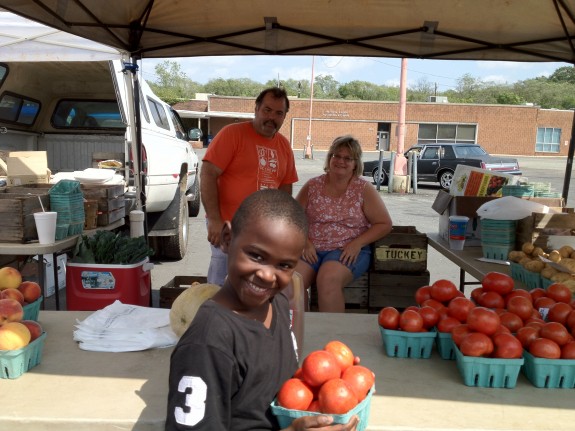
New Tomato Lover, Keonte Murphy, with Kevin and Sheri Tuckey at the CHEW Farmer's Market in Anacostia
On Saturday, I demonstrated and gave free samples of my Fresh Tomato Salsa with Watermelon at the “Community Harvest for Education Ward 7,” a new Farmers Market in the middle of Anacostia, a beautiful part of the city with rolling hills, classic homes, huge, ancient trees, and some of the most lovely people you’ll ever meet. There, I had the pleasure of meeting Keonte, his family and others, who were amazed at how easy and delicious fresh, home-made salsa can be. Keonte and other children were especially delighted with the salsa, which confirmed my belief and experience that children do love vegetables, if they are prepared well and offered positively. Keonte, his Dad and others promised they’d make my salsa at home and bought plenty of the vine-ripe tomatoes abundant at the CHEW Market where I have the honor of volunteering periodically.
When I was young, one of my most vivid memories is the taste of my Grandmother’s vine-ripened tomatoes. I’ll never forget how soft, plump, sweet and deep red they were. Definitely not today’s traveling kind. They were the kind you picked and ate, still warm from the day’s sun.
The memory of these delectable treats makes tomato season my favorite time of year – for eating, that is. Nothing is as delicious as a vine-ripened, field-grown tomato, which, lucky for us, we can get from our local farmers at the Rose Park Farmers Market on Wednesdays, Burleith on Saturdays and Dupont Circle on Sundays.
Today is the 7th of “Katherine’s Weekly Market Recipes,” all of which are designed to be delicious, easy, quick, family-friendly, nutritious (heart-healthy & diabetes-friendly), and to highlight produce found at our local Farmers Markets this week. At your Farmers Market, you’ll find produce picked at peak ripeness, which means maximum flavor, texture and nutrition. You’re also helping save the environment when you buy at your Farmers Market. Here’s how…
Silvestro’s Gazpacho
This recipe was provided to me by Burleith resident, and authentic Italian, Silvestro Conte.
Tomatoes, technically a fruit, are rich in vitamin C, potassium, and a powerful antioxidant called “lycopene,” which gives the tomato its red color. Lycopene in tomatoes may help prevent prostate cancer and heart disease.
Men who consumed 10 or more servings of tomato products a week had a 35% decrease in risk of prostate cancer relative to those who consumed 1.5 servings or fewer per week, according to a major Harvard study. This benefit is largely attributed to the pigment lycopene found in the tomatoes, a phytochemical or a beneficial plant compound. Lycopene can also be found in other red fruits such as watermelon, pink grapefruit, and guava. Lycopene is a potent scavenger of gene-damaging free radicals. Men with lycopene levels in the top 20% had a 46% decrease in risk of heart attack compared to those in the bottom 20%.
Apparently, each fruit and vegetable is a little factory of nutrients and chemicals called phytochemicals (“phyto” meaning plant in Greek). These chemicals end up in your body’s tissues, where they have potent disease-preventing and life-enhancing properties. The phytochemicals in fruits and vegetables, when eaten whole, have antioxidant effects, stimulate the immune system, enhance cancer-fighting enzymes, positively influence hormone metabolism, and even have an antibacterial and antiviral effect. These important properties help reduce the incidence of cancer, heart disease, and other diseases of aging.
Serves 16+
Ingredients
6.5 lbs Vine Ripe Tomatoes, washed, cored and chopped, with skin and seeds
2 Green Bell Peppers, seeded and chopped
4 Red Bell Peppers, seeded and chopped
4 Celery Stalks, Including leaves, chopped
4 lbs. Peeled and seeded Cucumbers, chopped
1 Yellow Onion, peeled and chopped
4 Garlic cloves, peeled and chopped
2 Tablespoons White Wine Vinegar (more if you like it tart, but be careful)
6 Tablespoons Extra Virgin Olive Oil
Salt and Freshly Ground Black Pepper to taste (Optional)
Sprinkling of Cumin (Optional)
Instructions
After careful washing, cut all vegetables into chunks to make them easier to blend. Blend with a food processor or Hand Blender, until you have the consistency you enjoy. My friend, Silvestro likes it a little chunky (as do I).
Once blended, add the olive oil, the vinegar, and, if you wish, the salt, the black pepper, and the cumin. Silvestro says “Cumin is optional : I like that extra richer flavor it adds.” I’ve made this gazpacho without adding salt or pepper and it is delicious. Serve immediately or chill in the refrigerator for later. If you want a denser product, add bread crumbs.
Makes one gallon of Gazpacho, about 2,000 calories for the entire pot. Divided into 16 servings, that’s 125 calories per serving… And if you don’t add salt, it contains 0 sodium!

